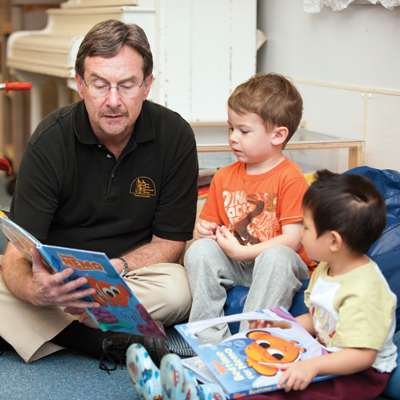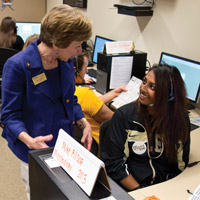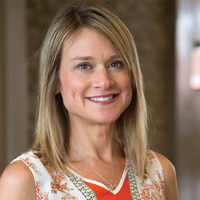Quality Care

Working with a child in the Ben and Maxine Miller Child Development Laboratory School, Fatimah Rashad, who earned a Ph.D. in psychology in May, uses an iPad to help gauge how much this “pre-talking” toddler understands. For researchers and educators, the lab school is equivalent to a teaching hospital in the medical field.
Researchers in the Department of Human Development and Family Studies are concerned about relationships both within the home and other care settings. Leah Hibel, assistant professor of human development and family studies, examines the intersection of behavior and biology, specifically in the context of the ways in which mothers soothe their infants. In addition to calming crying babies by rocking, suckling and talking, few people realize that a mother is also controlling her baby’s hormones as well, she says.
When a baby becomes distressed, stress hormones like cortisol increase, Hibel says. Mothers help reduce stress levels in babies by calming them down. A component of her work also examines how a mother’s hormones respond to her infant’s signals and how these hormones affect maternal behavior.
Jim Elicker, associate professor of human development and family studies, has worked with graduate students for 20 years to evaluate the quality of child care outside of the home. “In the United States, we have more infants in child care than any other country in the world,” he says. “It’s a critical issue, especially for infants who are in child care eight or nine hours a day. That’s a good part of their waking life in the first year.”

Jim Elicker, associate professor of human development and family studies, researches the impact of caregiver-child relationships outside the home. He has been conducting scientific reviews of quality child care for more than two decades.
Elicker says the most important part of his research is studying the relationships that babies have with their non-parental caregivers. In one study, he and his colleagues are involved in a four-year evaluation of the Quality Rating and Improvement Systems (QRIS), known as Paths to QUALITY in Indiana. Much like a restaurant rating system, QRIS measures child care quality and assigns certificates for up to four achieved levels, from basic licensing to high-quality accreditation. QRIS provides information to parents looking for child care, rewards providers for moving up to higher levels and offers technical assistance to support quality improvement.
“There’s a huge issue in Indiana with some types of child care that are completely unregulated,” Elicker says. “For example, we know that there are now more unlicensed but legal church-sponsored centers than there are licensed child care centers in Indiana, so there are likely more children in unlicensed centers every day.”
Elicker says the potentially harmful thing about low-quality or unlicensed child care is that there are no regulations regarding the types of activities available for children, no standards for the qualifications of the caregivers and no limits to the number of children within each care group.
Fortunately, Elicker and his team have a chance to effect change. He says the Department of Health and Human Services sponsors various meetings and conferences to bring researchers and policymakers together. For Elicker, that means making his research accessible to federal and state lawmakers to show what benefits children in child care settings and what can be detrimental. And for families shelling out as much as $300 a week for child care, that’s a better path toward peace of mind.











